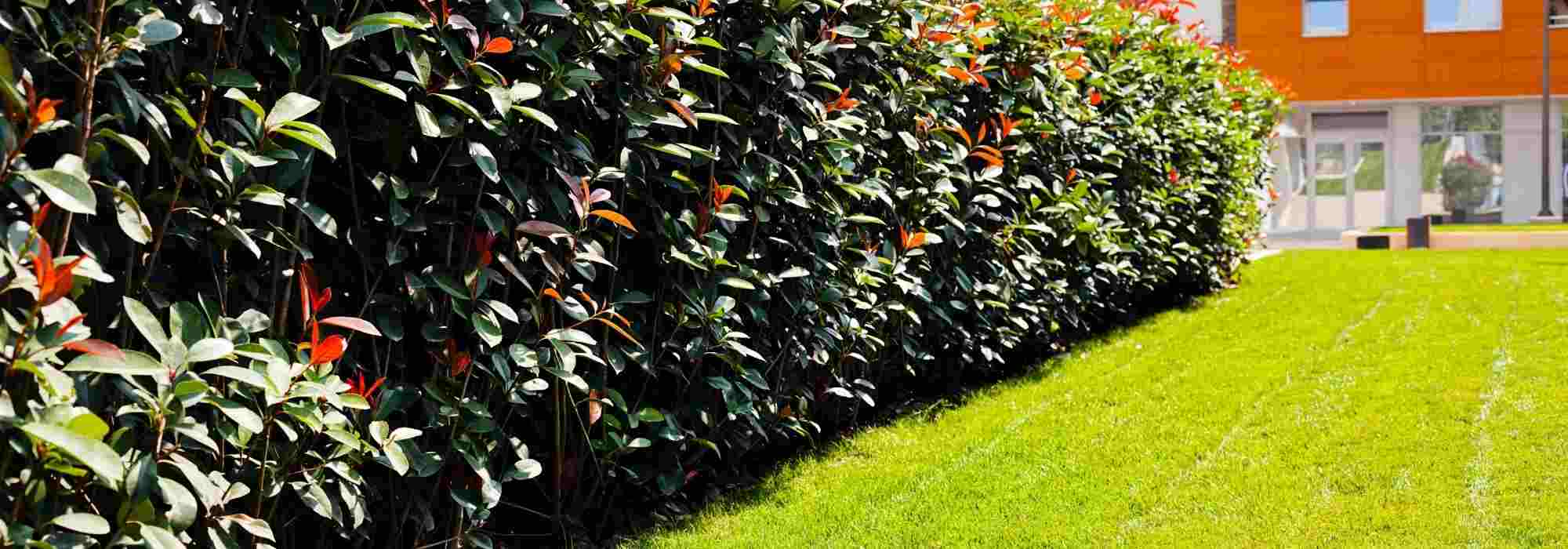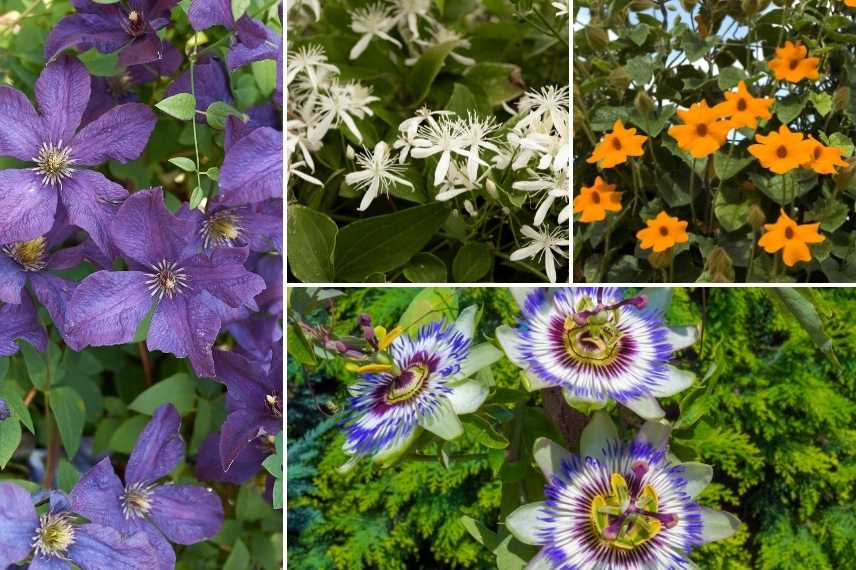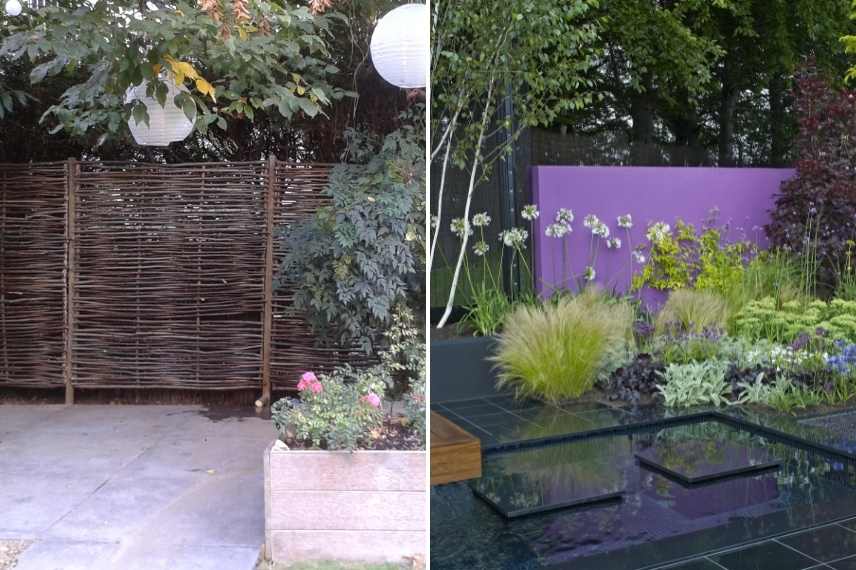
How to hide an ugly hedge?
Our tips for concealing an unsightly hedge
Contents
Just as an unsightly wall, a hedge can be quite unattractive when it has become bare at its base due to lack of maintenance, or made up of bushes that one no longer wishes to see such as thujas or laurel palms… And sometimes, we neither have the means nor the time to remove it, the task becoming daunting when the hedge is already well established and spans a significant length. Moreover, these hedges are often shared with neighbours, complicating the matter. In short… in some cases, we would like to hide a hedge that, although green, is no longer aesthetically pleasing (or satisfying).
So, what can be used to obscure an unappealing hedge? How can it be concealed to better forget it? Here are some tips for masking a hedge that cannot be removed.
Start by reducing its dimensions
You can prune an evergreen hedge in height and width, thereby reducing its sometimes oppressive visual impact, especially if it surrounds a small garden. Proceed in spring, between April and May, if your hedge is evergreen.
However, this is only applicable if the hedge is still relatively young. In the case of an old hedge with thick wood, it is risky to proceed in this manner: reducing its height will reveal unsightly stumps, and if you prune it in thickness, it will have much less greenery, as foliage is often very sparse on its new outer “walls.”

Read also
10 climbing plants ideal for fencesCreate a mixed-border bed
Another solution, more reasonable, is to “make do” with this hedge, often evergreen, by integrating it as a backdrop if it is not diseased. One of the best ways to conceal this hedge you no longer want is to create a mixed border right in front : it will incorporate plants that are large and tall enough to make it forgettable. You will need to avoid planting directly at the edge of the hedge but at least 1 metre away, this option is therefore suitable for a relatively large garden, allowing for a wide English-style border.
This is easier to arrange in a sunny location, which allows for the installation of many lush perennials and medium to tall ornamental grasses that will effectively mask the hedge you no longer wish to see. You will then select from a range of plants with a light root system.
The difficulty of this type of border lies indeed in the root competition caused by the hedge, especially if it is old and deeply established. The other major drawback is the generally dry soil at the base of an evergreen hedge like Photinias or Laurels, as the shrubs absorb most of the moisture from the soil. Therefore, you will plant your plants away from the base of the shrubs forming the hedge.
In the north, opt for dry shade perennials that adapt well to these challenging conditions, or for tall perennials that tolerate dry soils in the sun, not forgetting bulbous plants that can be more easily planted in the gaps between the roots. To ensure the best establishment of the plants, choose them in pots, as you will have fewer issues finding a small space between the roots.
- in shade or light shade: Acanthus and Fatsias for beautiful volumes, Aspidistras, Bleeding Hearts, Stinking Irises, and as groundcover Epimediums, Asarums, pachysandra, ferns for dry shade (Pteridium aquilinum, Polystichums…). Mulching will be essential to maintain some moisture.
- in partial shade or full sun: Agastaches, Alcea, Sedums, Asters, Miscanthus, Panicums and Pennisetums, Verbascums, Agapanthus ‘Blue Giant’, Eryngiums, Agaves, Phormiums, Cynara cardunculus, Geraniums cinereum…. all plants that are not afraid of dry soils and that provide verticality, volume or interesting blooms!
Finally, pay attention to the planting: identify the spaces between the roots to install the bulbous plants, or even the annuals, and replace some of the soil, ideally creating a mound that will be enriched with compost.
 Here, Hibiscus and daylilies have even found their place in front of a hedge!
Here, Hibiscus and daylilies have even found their place in front of a hedge!
Divert attention with climbing plants
Planting two or three of the most voluble climbing plants is another option for greening the front of a hedge, thereby concealing it. By choosing a climber with a long flowering period and interspersing it with a spring and summer flowering climber, you create a floral green screen for several months, almost from April to September depending on the varieties, hiding the unsightly hedge behind. A third evergreen climber with winter flowering will fill in the gaps during the cold season. Climbers with relatively light foliage provide a beautiful contrast against the often dark green persistent hedges. Most climbers for this purpose will require sunlight or filtered partial shade.
Once again, pay attention to planting by thoroughly preparing the soil and enriching it to allow for maximum establishment of your climbers. Choose a small volume container plant as you won’t be able to make a very large planting hole, but clematis, which are ideal, can be laid down when planting, making the operation easier in our specific context. Use trellises or arches of suitable dimensions for the spread of the climbers.
→ Our selection of climbers with significant spread, well-suited to ensure maximum plant coverage:
– numerous clematis (for example, Clematis terniflora, Clematis flammula ‘Sweet Summer Love’, Clematis viticella or for spring, Clematis armandii ‘Apple Blossom’, Passiflora caerulea for maximum regional adaptability, Trachelospermum such as the elegant ‘Chili & Vanilla’, a honeysuckle like Lonicera periclymenum ‘Serotina’ in well-worked soil, and Piloestegia viburnoides for late summer in shaded areas…
– also try an annual for summer exuberance: Cobaea, Thunbergia, or Ipomoea.

Clematis viticella or Italian clematis, Clematis terniflora, Thunbergia, and Passiflora caerulea
Read also
What to plant under a tree?Conceal with screens
One final option is to literally dress your unwanted hedge by concealing it with a screen, made of wood or metal, more or less perforated. This completely obstructs the old hedge while creating a lasting, often very aesthetic decor depending on the material chosen (hazel panels, Corten or aluminium screens…). You can even, in contemporary or exotic designs, build a small, thin wall in front of the hedge, which you can paint in a bright colour to completely forget about that unsightly hedge.
Note: you will lose a bit of ground depth, as these screens need to be installed at a minimum distance of about 50 cm from the hedge.

Hazel screens conceal a very bare hedge (© Gwenaëlle David). On the right, a purple wall completely makes the hedge behind it forgettable
Install decorative objects
Finally, always to divert attention, hide the unsightly plant block by placing a large object in front of it that will (somewhat) make it forgettable!
This could be a giant insect hotel, a large unpierced jar containing, why not, a striking horsetail or a magnificent waterside plant, an obelisk painted in a contrasting colour (turquoise blue, pink, red!) where you can train an annual or a climbing plant, a sufficiently large decorative object, or even an orange tree container if the spot is sunny (it will also benefit from a sheltered area from the winds)…
This works well on a short linear hedge, the idea being not to accumulate objects, but to offer just one that captures attention with its size or colours.

- Subscribe!
- Contents
































Comments